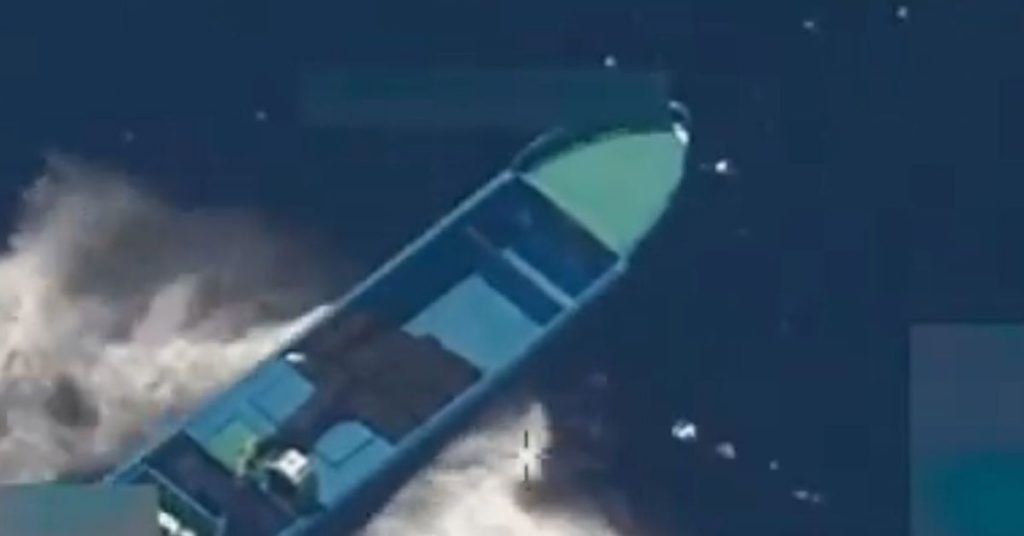Intensifying the War on Drugs: The U.S. Military’s Tactics in Latin America
Recent Military Strikes
In a significant escalation of U.S. military involvement in drug enforcement, the Pentagon recently launched its eighth strike against an alleged drug-carrying vessel in the eastern Pacific Ocean. The strike, which occurred on a Tuesday night, resulted in the deaths of two individuals and has raised the total death toll from recent military actions to at least 34. This development highlights an expanding focus by the Trump administration on drug trafficking in South American waters, particularly against the backdrop of rising fentanyl-related overdose deaths in the U.S.
Shift in Targeting Geography
Notably, this latest operation departs from earlier strikes that predominantly occurred in the Caribbean. By moving operations to the eastern Pacific, the U.S. military has redirected its focus toward Colombia, a key player in the global drug trade. Much of the cocaine produced in Colombia makes its way through these waters, emphasizing the strategic importance of this shift in targeting.
The Rhetoric of War
Defense Secretary Pete Hegseth, in a social media post, drew a compelling comparison between the current military operation against drug cartels and the post-9/11 war on terrorism. According to Hegseth, “Just as Al Qaeda waged war on our homeland, these cartels are waging war on our border and our people.” This rhetoric aims to frame the drug crisis as not merely a public health issue but a national security threat that warrants military intervention.
Legal Justifications for Military Action
Supporting this aggressive military posture, President Trump has characterized the strikes as part of an “armed conflict” against drug cartels, labeling these organizations as unlawful combatants. This legal rationale echoes the justification used by previous administrations during the war on terror, tying the current military action to a broader historical context of U.S. interventions in foreign conflicts.
Visual Evidence of Military Operations
In a striking visual representation of the military’s recent operations, Hegseth shared a brief video on social media showing a small boat filled with brown packages. Moments later, the vessel is seen exploding, engulfed in flames as it sinks. This graphic evidence underscores the violence associated with these drug-trafficking vessel interceptions, further driving home the administration’s message of zero tolerance.
Handling Survivors of Strikes
The U.S. military’s approach to handling survivors of these strikes has sparked controversy. To date, there has been little follow-through in prosecuting any of those involved in the drug caravans. Two survivors from an earlier strike were returned to their home countries—Ecuador and Colombia—without any criminal charges. Ecuadorian officials subsequently released one survivor, citing a lack of evidence for any criminal activity.
The Upsurge of Military Forces
The U.S. has amassed a notable military presence in the Caribbean and off the coast of Venezuela since mid-2022. This influx of forces has led to speculation that President Trump might attempt to overthrow Nicolás Maduro, who faces U.S. charges of narcoterrorism. Such actions align with a growing perception of the interconnections between drug trafficking and political instability in the region.
The Broader Drug Crisis
The war on drugs is not merely an international affair; it reflects domestic concerns, particularly regarding the epidemic of fentanyl overdoses in the United States. While Venezuela poses a significant threat in terms of drug transit, studies indicate that approximately 75% of the cocaine produced in Colombia is funneled through the eastern Pacific. Thus, the shift in military operations may also be an effort to address both the supply and demand of narcotics affecting American communities.
Conclusion
This multifaceted approach to tackling drug trafficking is still unfolding, with political, military, and legal dimensions that intertwine in complex ways. As the U.S. military expands its role in combating this transnational threat, the ramifications of these actions will likely be felt on both sides of the border, raising questions about effectiveness, ethics, and the future direction of U.S. drug policy.

